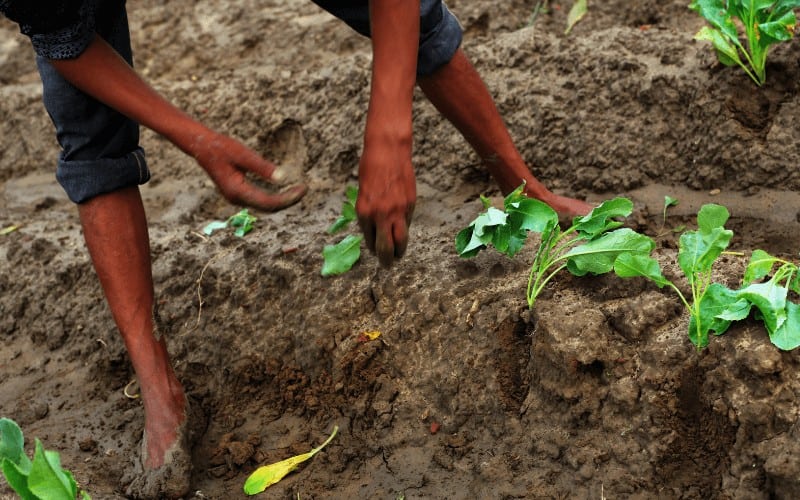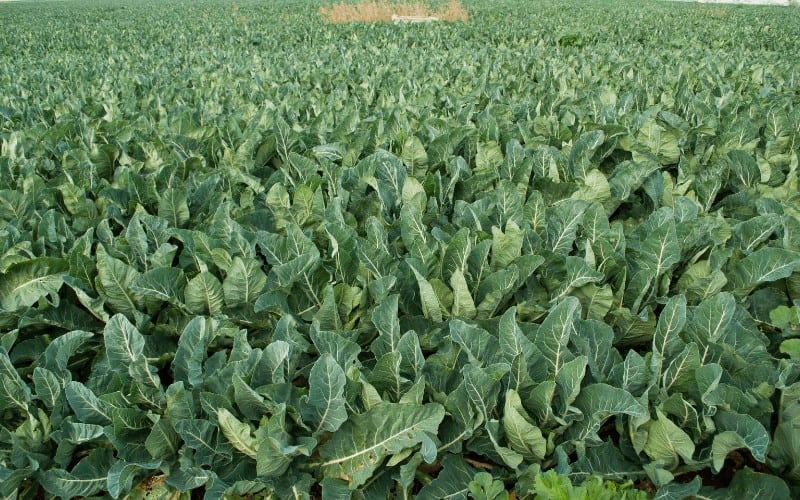Cauliflower is one of the most versatile vegetables. It is said to contain antioxidants and phytonutrients that can help protect you from cancer.
Cauliflower is known as a superfood. It produces sapid and tasty flower heads. It is also rich in vitamins and a great source of folate and fiber.
Because of the various nutritional value of cauliflower, many people like growing it in their garden. While there are different ways you can grow this plant, can you grow cauliflower from scraps? Well, the short answer is YES, and this guide will focus on how to grow cauliflower from scraps.
If you want to grow the cauliflowers from scraps, it is vital to know that this plant requires constant attention. It requires continuous sunlight exposure and adequate watering to be able to grow well.
Table of Contents
How To Grow Cauliflower From Scraps

To successfully produce healthy sprouts, you must grow the cauliflower the correct way. Before trying to know how to grow cauliflower from scraps, you must be ready to give the plant enough attention after planting it if you really want it to blossom.
That said, follow the steps outlined below to grow cauliflower vegetable from scraps:
Read Also: How To Grow Onions From Scraps
1. Get healthy cauliflower heads or scraps
You can get cauliflower heads from the stores or even use leftovers from your kitchen.
2. Chop off the base of the cauliflower heads
You can do this by cutting out parts of the flowers attached to the scraps. You can skip this step if you already cut the debris from the cauliflower.
3. Getting healthy and moisture-retaining soil
For cauliflower to grow, it requires water-retaining soil. It is also advisable to add mulch to the soil to conserve moisture.
4. Place the soil in shallow containers and add water
You want to make sure the water is not too much to swallow the cauliflower.
5. Lay the cauliflower scrapes in the container
It is crucial to place the scrapes facing down. The places cut off from the head should face upwards. Remember to set the cauliflower scrapes 1.2 inches deep in the soil.
6. Find the best place to keep your plant
Cauliflowers thrive under six hours or more of sunlight. Find a place with access to that amount of the sun, and place the container.
7. Allow the scrapes to sprout
It usually takes a cauliflower seedling a week or less to start developing flowers. Make sure to change the water in the container every two days.
8. Transfer the cauliflower seedling
Before transferring the seedlings outdoors, remember to take out the plant once a day for a week. It would be best to strengthen the young plants and get them prepared for the harsh outdoor weather.
You can plant the seedlings by placing them in the ground and burying them up to the stem. Use your fingers to gather dirt around them and press in lightly.
When transferring seedlings outdoors, you should set them 18-24 inches apart from each other. Cauliflower thrives best in 60 F. (15 C.), as sowing it too far below will make it die, and planting it too far above would lead to buttons.
9. Caring for the plant
Remember to water the cauliflower consistently and adequately. It is better to over water than under water the plant. Add mulch to the soil to help retain moisture.
When Is The Best Time To Grow Cauliflower?
You can sow cauliflower in late March, early May, and June for better success and a more extended cropping season.
Because growing cauliflower in the spring instead of summer protects the plant from the ramped-up heat, remember to protect seedlings from the cold by covering them with old milk.
Preparing The Soil For Growing Cauliflower
Cauliflower thrives better in well-drained soil. While growing cauliflower from scrapes, you must understand that it is better to start with a small plant nursery. Make sure the soil is rich in organic matter.
Avoid applying chemicals to the ground as it leads to spotted plant sprouts. Instead of white, the nodes would be brown or purple. You can also add mulch to the soil to retain its moisture.
Transferring Cauliflower Seedlings

A seedling must get adequate sunlight. Excessive heat and low sunlight could lead to leggy seedlings.
Before transferring your seedlings to the outdoors, you need to prepare them for at least a week because indoor plants need to be familiar with the outdoor conditions and temperature before being exposed.
With your fingers, gather a little soil around the plants' roots after planting. Make sure to transplant your seedlings on a dull day to reduce the risk of stunted growth or discolouration.
Frequently Asked Questions
Does cauliflower require sunlight exposure?
The cauliflower requires attention and conditions that are just right; not too hot, not too cold. During the early stages of growth, extreme cold could lead to stunted growth or buttons.
Excessive exposure to the sun could also lead to discolouration of the cauliflower. But like most vegetables, the cauliflower requires at least 6 hours of sunlight to grow well.
How much water does cauliflower need to grow?
Before planting the cauliflower, make sure to water your plants an hour before. It is a vegetable, and such requires adequate water to grow. It is better to overhydrate your plant than to leave it dehydrated.
How to fertilize the soil to grow cauliflower?
If your soil is below 6.5 pH level, adding limestone will help raise the pH level. If it is above 8.0, adding alkaline or peat moss will lower the pH level.
The cauliflower thrives best with 5-10-10 fertilizer. Make sure to clear weeds distorting this beautiful plant's growth.
After a week of planting your seedling outdoors, you can lay compost over the soil surrounding the plants.
Making compost tea involves soaking compost in clean water for at least two days. You can apply this mixture during summer or in the morning to give it a chance to dry properly.
How to know your cauliflower is growing properly.
When cauliflower is not growing well, there is often discolouration, stunted growth. The plant's head is also spotted, and instead of green, the leaves are purple or brown.
The whole head should be white and tightly packed. If the head looks disjointed, there is a problem.
How do you control pests and diseases on cauliflower plant?
The cauliflower belongs to the cabbage family and therefore is susceptible to every cabbage pests and diseases. However, you can manage pests by sealing the plants and preventing pests from laying their eggs.
Some of the pests and diseases include Cabbage whitefly, Black rot, Clubroot, Aphids, etc. Remember to check the heads to make sure pests are not hiding under them.
Read Also:
- How To Harvest Chives Without Killing The Plant
- How To Harvest Dill Without Killing The Plant
- How To Pick Rosemary Without Killing The Plant
- How To Stop Grass From Growing Fast
- How To Care For Pachysandra Seeds
- Bugs That Look Like Cockroaches But Aren’t
Conclusion
Learning how to grow cauliflower from scrapes is not the easiest thing, especially for amateur gardeners. Following the instructions provided in this article, you can easily grow this plant from scraps.
Remember to water your plant as lack of moisture could cause your plant to die. It is safer to overwater your plants than to underwater them.
Cauliflower is a vegetable, and vegetables need water to grow. Also, remember to avoid chemicals and stick with organic compost. Good luck!




